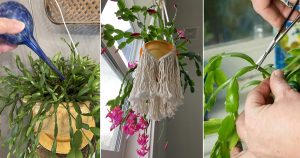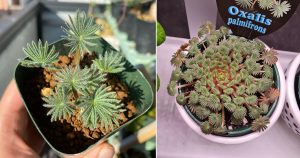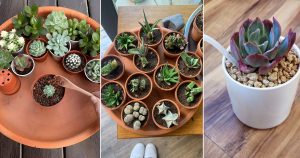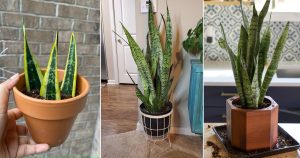Discover the adorable Ponytail Palm and learn its care tips, requirements, and more to bring this tropical beauty to your indoor space.
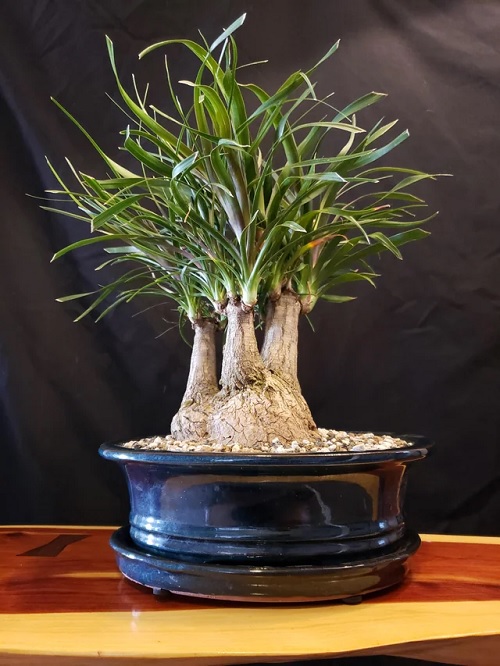
Did you know that the Ponytail Palm stores water in its bulbous trunk, allowing it to survive for weeks without a drop? That’s why it’s a lifesaver for busy bees or anyone just stepping into the plant world. Read on to see how you can care for this green buddy without losing sleep over watering schedules!
Elephant Palm – Key Facts
| Common Name | Ponytail palm, Elephant’s foot |
| Botanical Name | Beaucarnea recurvata |
| Family | Asparagaceae |
| Plant Type | Shrub, tree |
| Mature Size | 6-8 ft. tall, 3-5 ft. spread; 30 feet tall outdoors |
| Sun Exposure | Full |
| Soil Type | Sandy, well-drained |
| Soil pH | Neutral |
| Bloom Time | Summer |
| Flower Color | White |
| Hardiness Zones | 10-11 (USDA) |
| Native Area | Central America |
Elephant Palm Information
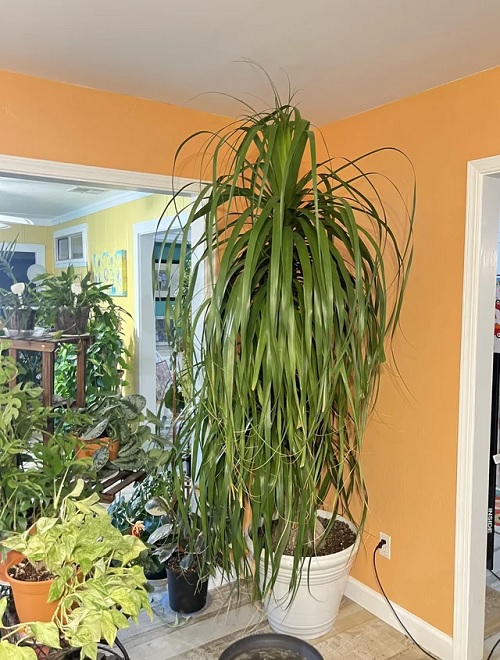
The ponytail palm is a unique plant native to parts of Mexico. In the wild, it grows tall and majestic, but indoors it stays comfortably compact, making it perfect for homes.
Also known as elephant foot tree or bottle palm, the ponytail plant has a bare, bulbous stem with a tuft of long, narrow leaves at the top that spill over like a ponytail. Its sleek trunk and cascading leaves give it a charm that turns heads, and since it’s so easy to care for, no wonder it’s loved by many plant parents.
Being a part of the asparagus family, it thrives as a desktop or table plant inside, while outdoors it can grow into a towering tree up to 30 feet tall. However, they usually reach around 6 feet indoors.
Fun fact: Despite the name, the Ponytail Palm isn’t a palm at all! It’s a succulent, which explains its ability to store water and survive drought-like conditions.
Propagating Elephant Palm
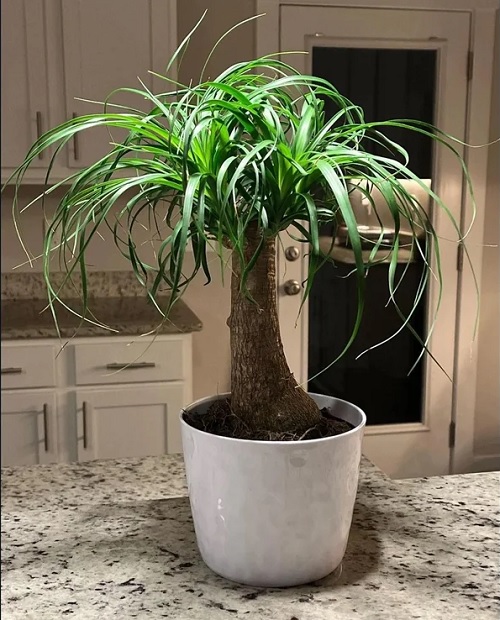
You can propagate ponytail palms from seed, but it is easier to wait for the plant to develop an offset to propagate. However, this could be a difficult task to master because of a lack of roots on the offsets.
Once a ponytail palm develops offsets or pups from the base, you can remove and pot them individually, or you can also propagate the plant when it is about 4-5 inches in height. Once a root has developed, cut it away from the plant with a clean knife. Let the pup dry out for a day to close and prevent rot.
Use a rooting hormone to stimulate new root growth on the offset. Place the pup in its own pot about 1/3 of the way down. Either pack the soil in or use rocks to keep it in place. A ponytail palm rarely flowers indoors to produce viable seeds.
Note: Don’t rush propagation—these plants grow slowly, and pups may take years to show up. If yours hasn’t produced offsets yet, it’s completely normal.
Elephant Palm Requirements
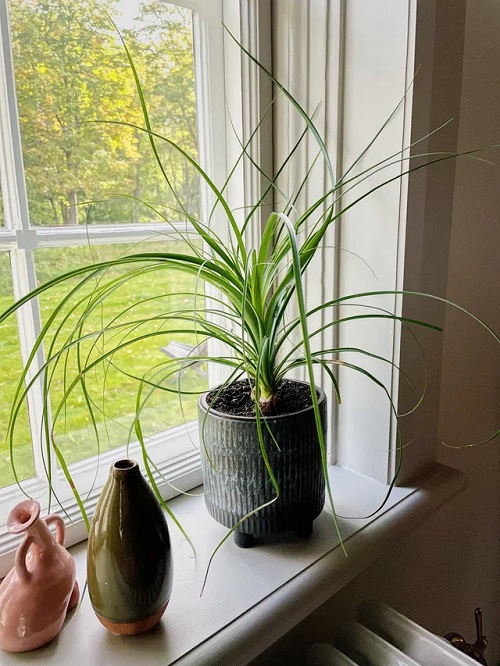
Light
Coming from the deserts, the ponytail palm thrives in bright, direct sunlight. Place it in a sunny window, preferably south-facing. You can also take it outside in warmer months for an extra boost.
Give it a little spin every few weeks—this way, the leaves won’t lean just one way but spread evenly like a well-balanced ponytail.
Soil
The soil should be light and well-draining. This plant has zero tolerance for soggy feet, so avoid heavy mixes. A cactus or succulent mix works perfectly.
Watering
Water your ponytail palm deeply but in appropriate gaps. Let the soil dry out between watering and water even less in winter.
Here’s where most people trip up—overwatering. Crispy brown leaf tips usually mean it’s thirsty, while a mushy trunk is the red flag of root rot from too much water.
Temperature and Humidity
Ponytail palms like standard indoor temperatures. You can make them feel the chill of the winter weather during dormancy. They do not need much humidity and tolerate dry indoor air very well.
Keep them away from drafty windows or heating vents—no one likes a cold shoulder or a hot blast, least of all this plant.
Elephant Palm Care
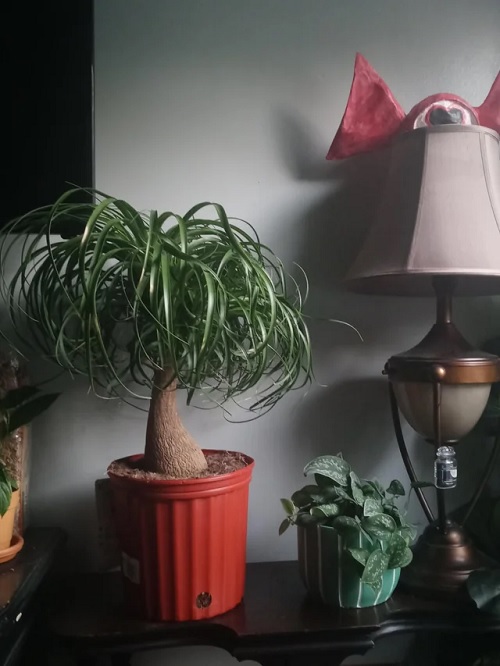
Fertilizer
Feed weekly with liquid fertilizer during the growing season, or use a slow-release pellet fertilizer in the spring. For the appropriate amount to use, follow the product label instructions. It is advisable if you reduce feeding during the winter.
Ponytail palms grow at their own pace, so don’t expect miracles overnight. It’s a slow and steady wins the race kind of plant.
Pruning
Trim the tips of damaged leaves, and if the offsets or pups have secondary shoots growing upwards, you can prune these away. This will help to maintain a central trunk and classic tree-like appearance. However, a multi-stemmed tree is often likable, and many people love to have these secondary shoots.
Pest and Disease Management
Ponytail palms are not particularly vulnerable to pests, but like any houseplant, they might have mealybugs, spider mites, or scale. Root rot is the most common issue for a ponytail palm. But you can avoid it with a good drainage and by not overwatering.
Extra tip: If pests do show up, simply wipe the leaves with a damp cloth dipped in soapy water instead of going straight for chemical sprays. It’s usually enough for mild infestations.
Repotting
Ponytail palms thrive in small containers and rarely need repotting. Every few years is plenty. Choose a container that leaves about 1 inch (2.5 cm) between the trunk base and pot edge.
These plants actually enjoy being a bit root-bound, so resist the urge to repot unless they’ve truly outgrown their home.
With its unique appearance and low-maintenance requirements, the Ponytail Palm is a great addition to any home. By following the care tips and requirements outlined above, you can see your friend thriving, and we are sure you’ll love that. Let us know how your Ponytail Palm is doing in the comments below!

